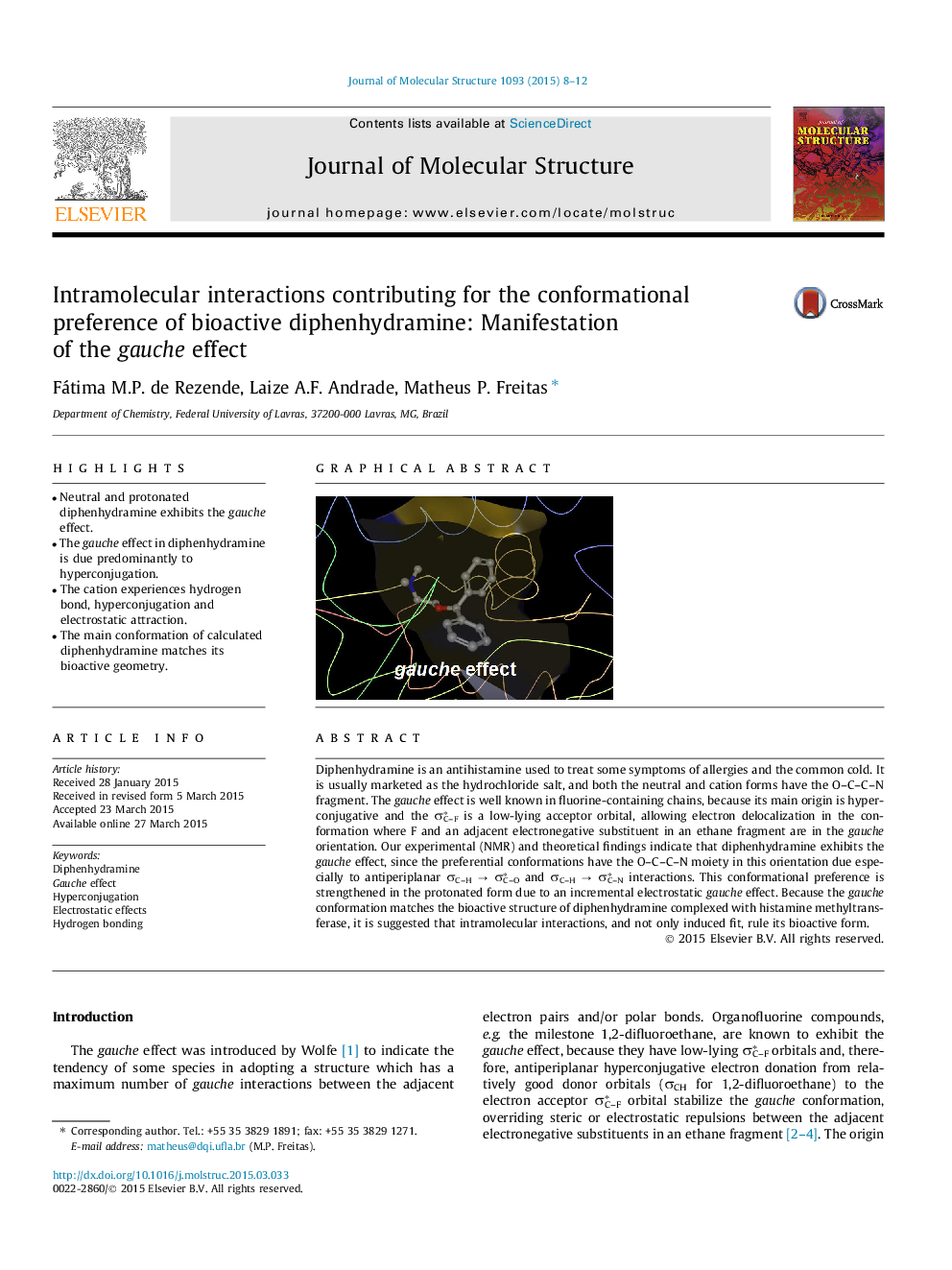| Article ID | Journal | Published Year | Pages | File Type |
|---|---|---|---|---|
| 1404844 | Journal of Molecular Structure | 2015 | 5 Pages |
•Neutral and protonated diphenhydramine exhibits the gauche effect.•The gauche effect in diphenhydramine is due predominantly to hyperconjugation.•The cation experiences hydrogen bond, hyperconjugation and electrostatic attraction.•The main conformation of calculated diphenhydramine matches its bioactive geometry.
Diphenhydramine is an antihistamine used to treat some symptoms of allergies and the common cold. It is usually marketed as the hydrochloride salt, and both the neutral and cation forms have the O–C–C–N fragment. The gauche effect is well known in fluorine-containing chains, because its main origin is hyperconjugative and the σ∗C–F is a low-lying acceptor orbital, allowing electron delocalization in the conformation where F and an adjacent electronegative substituent in an ethane fragment are in the gauche orientation. Our experimental (NMR) and theoretical findings indicate that diphenhydramine exhibits the gauche effect, since the preferential conformations have the O–C–C–N moiety in this orientation due especially to antiperiplanar σC–H → σ∗C–O and σC–H → σ∗C–N interactions. This conformational preference is strengthened in the protonated form due to an incremental electrostatic gauche effect. Because the gauche conformation matches the bioactive structure of diphenhydramine complexed with histamine methyltransferase, it is suggested that intramolecular interactions, and not only induced fit, rule its bioactive form.
Graphical abstractFigure optionsDownload full-size imageDownload as PowerPoint slide
